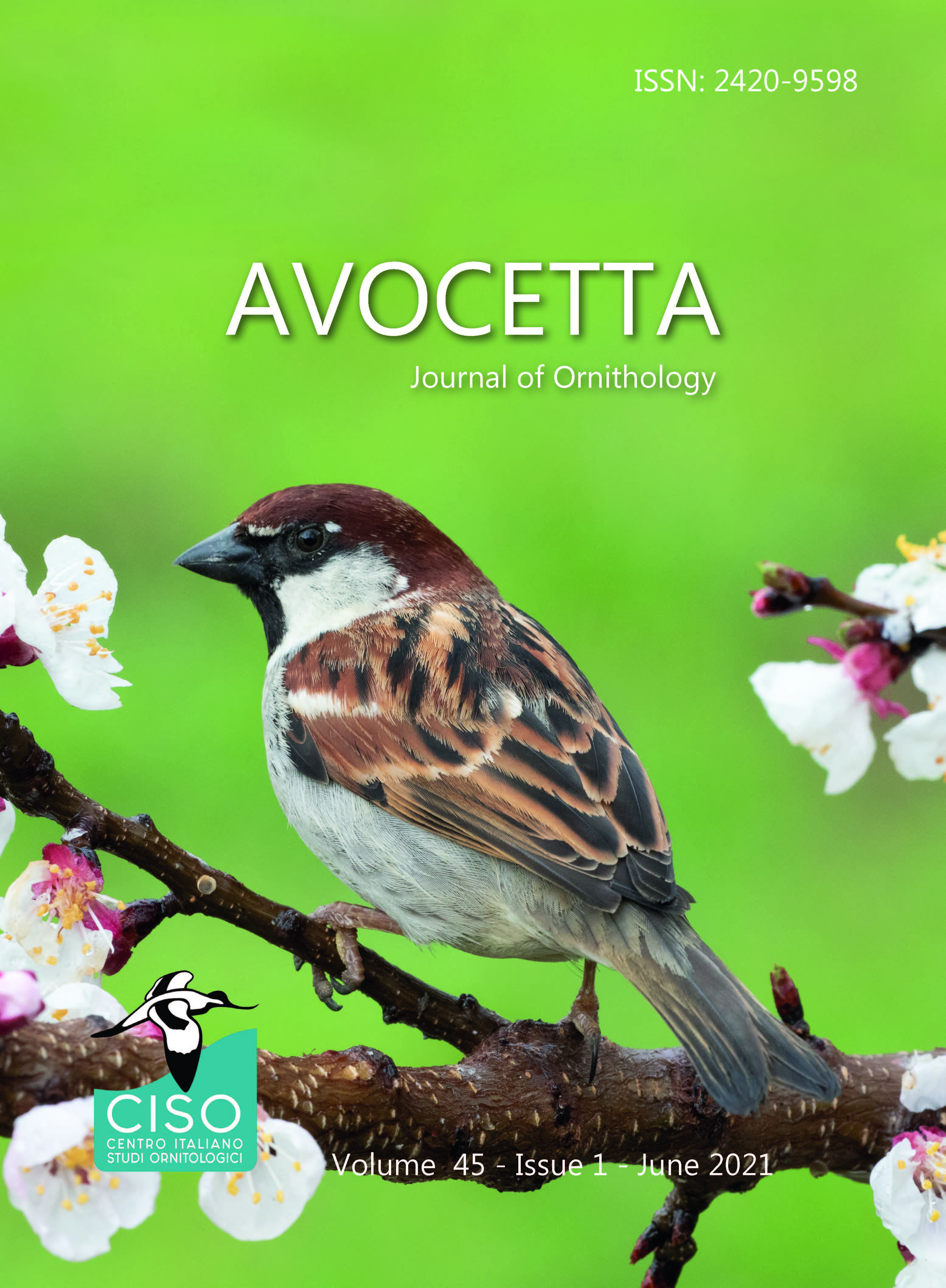
Volume 45 - N. 1
June 2021
Avocetta
Volume 45 - N. 1
Volume 45 - N.1, June 2021
-
Editorial - Mind the (gender) gap: prospects and strategies for women's career in ornithology
Benedetta Catitti, Daniela Campobello, Gaia Bazzi, Giulia Masoero, Letizia Campioni
-
An assessment of the current and historical distribution of the Corncrake Crex crex in the Western Italian Alps
Riccardo Alba, Giacomo Assandri, Giovanni Boano, Filippo Cravero & Dan Chamberlain
-
CISO-COI CHECK-LIST OF ITALIAN
BIRDS - 2020
Nicola Baccetti, Giancarlo Fracasso & Commissione Ornitologica Italiana (COI)
-
Short note - First record of Little
Bittern Ixobrychus minutus laying in a Common Moorhen Gallinula
chloropus nest
Awatif Talbi, Farrah Samraoui, Laid Touati, Boudjema Samraoui, Corrado Battisti
-
Short note - Barn Owl Tyto alba in Italy: data from fauna recovery centers show a patchy decline
Fulvio Fraticelli, Veronica Burresi, Angela Damiano, Giovanni Giardina, Nicola Maggi, Francesca Manzia, Davide Tartari, Marco Gustin
-
Short note - A case of spatial
coexistence among black wheatear Oenanthe
leucura, black-eared wheatear Oenanthe
hispanica and blue rock thrush Monticola
solitarius in the western Mediterranean
Claudio Açaí Bracho Estévanez
-
Columns - Italian Bird Rarities Committee (COI) - Report 29
Egidio Fulco & Cristiano Liuzzi (ed.)
-
Columns - PhD dissertation review in ornithology (fourth edition)
Letizia Campioni (ed.)
-
Bird news - June 2021
Gaia Bazzi (ed.)
-
Book reviews - June 2021
Michelangelo Morganti and Roberto Ambrosini

